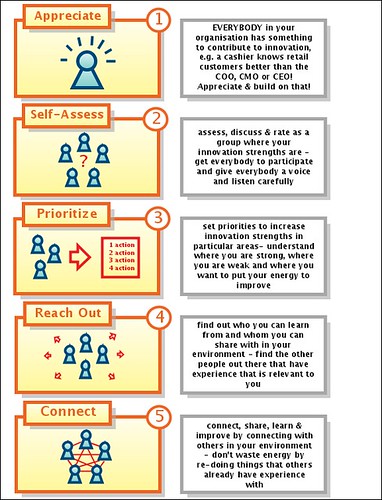 I was cruising through my blog reader, hopelessly “behind” in reading (my own construction – I know I can “mark all read!”) and came upon a post from Vic Desotelle who pointed to a TED talk on Compassion which somehow lead me to a Garr Reynolds post about a TED Talk by Evan Williams of Twitter. (Talk about the network!)
I was cruising through my blog reader, hopelessly “behind” in reading (my own construction – I know I can “mark all read!”) and came upon a post from Vic Desotelle who pointed to a TED talk on Compassion which somehow lead me to a Garr Reynolds post about a TED Talk by Evan Williams of Twitter. (Talk about the network!)
The post had a quote that resonated with my experience as a technology steward to various communities.
Presentation Zen: TED talk: Twitter & the power of the unexpected
You never know how users will end up using your technology. Sometimes they end up using your product in creative ways that you could not possibly have thought of on your own.
As I work with NGOs attempting to roll out intranets and collaboration tools, I preach two things:
- technology is designed for groups, but experienced by individual
- users are creative – use that as a powerful positive force rather than trying to get them to conform with rules and limitations.
These two tenets have significance for technology stewards. It means that they cannot assume that the members of their community will have the same experience they do with any particular tool or platform, and that over time, the community will continue on a predictable trajectory of use of that technology.
It is about a dynamic evolution of practices and applications of the technology, not about the installation or the simple availability of the tool. So here are some practice hints.
- Role model your experience and practices with tools, but don’t present them as the only options.
- Watch for experimentation and amplify new, useful practices. Better yet, encourage community members to talk about and share their practices.
- When members ask for tool adjustments based on their experimentation, work hard to accommodate rather than block innovation. This may mean going to bat with “higher-ups” to gain permission, or to allow the experimentation to fly “under the radar” until you can make a case for the value of the changes.
- Encourage the fringies – the people who push the limits of a tool. Make them allies rather than enemies. Their pushing of your buttons may also create the innovation that you need to foster wider adoption.
What are your suggestions for technology stewardship that involved unexpected uses?
And… you never know where a link will lead you either. 😉
Photo credit: Alex Osterwalder on Flickr
Hi Nancy,
thanks a lot for the post. It is pretty exciting to set up tools for an upcoming community but it is even more exciting to see how it will actually emerge. In the planning process, the elephant in the room surely is the question of how to plan for “creative useage”. To avoid an all too strict focus on one function is a very helpful idea, thanks again.
Nancy
Are you the same Nancy that took part in the UK Communities of Practice web chat some time ago ?
Anyway. my first reaction to the post was that we have to go back to that lovely state called “childhood” when attempting to encourage innovation.
By that I mean whatever your favourite activity was that you could do, with no restrictions whatsoever ! The first painting, the first pottery mug, the first sand castle.
That might help people get in a state of mind. After that, no bossy adult behaviour allowed ! It stifles creative output…..
And it also means that when you are building your team, invite people in from age 10 to 80. It generates so much more, massively better, content and ideas. And do you know what ? It gives the child and the elderly person some confidence as well !
Regards
Alex